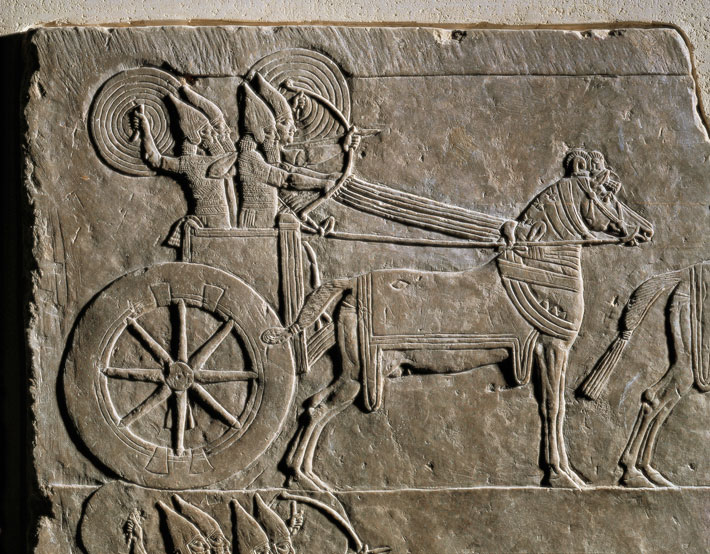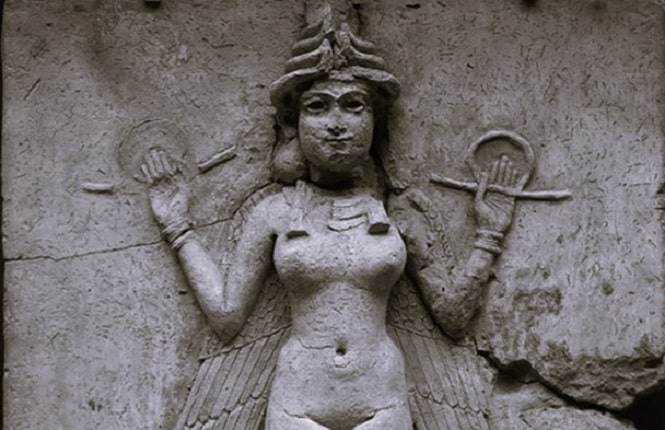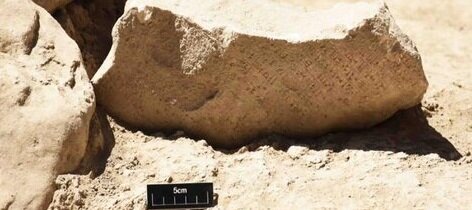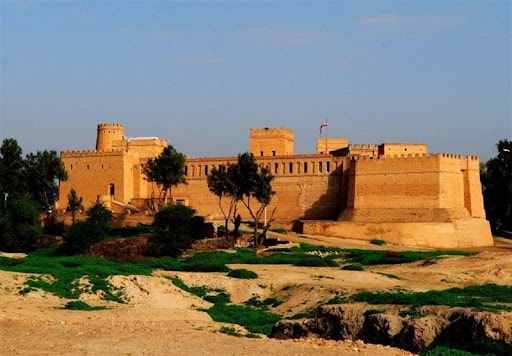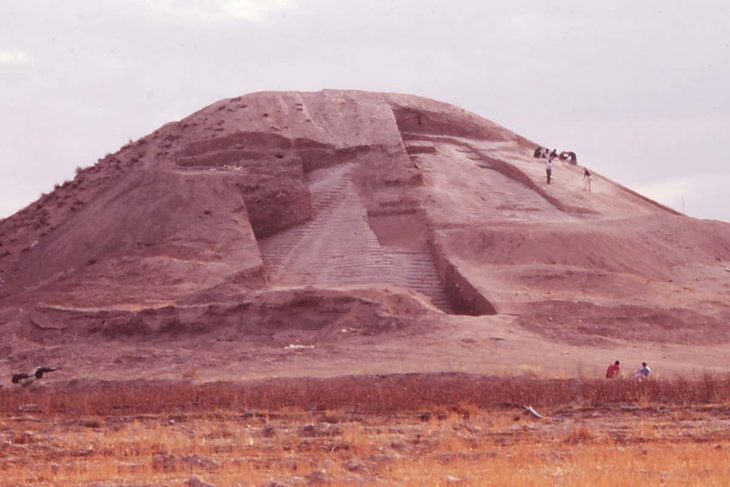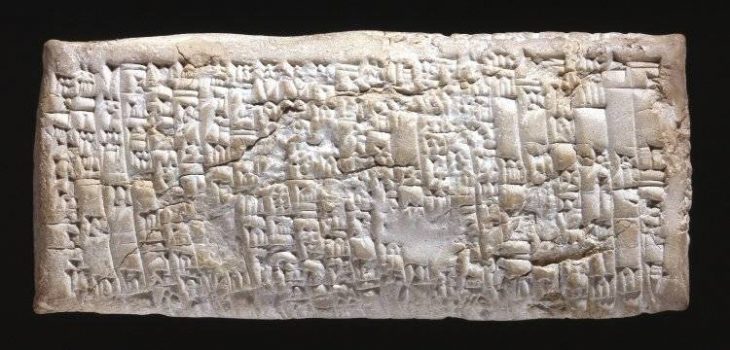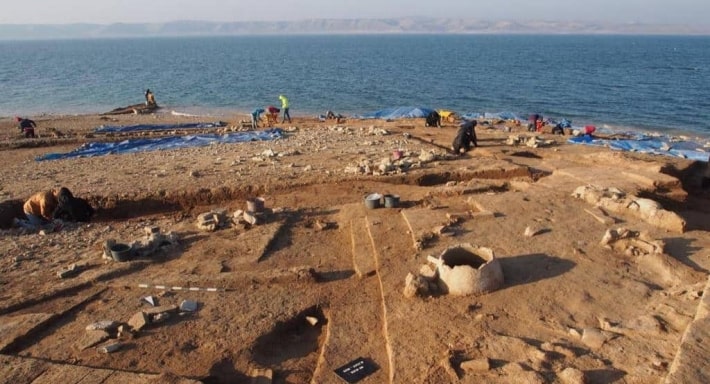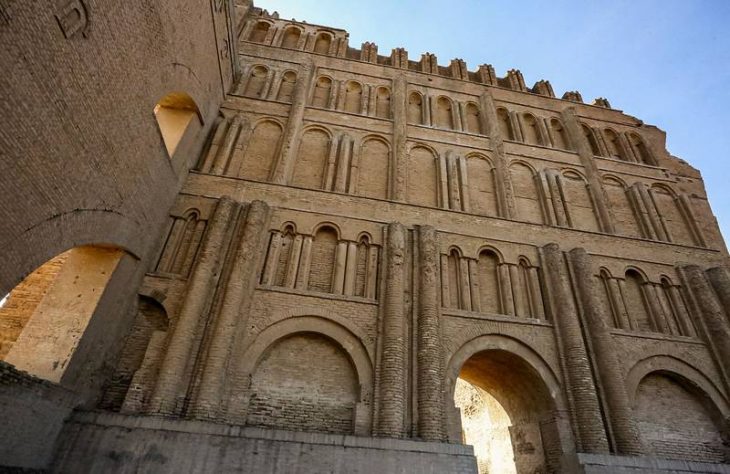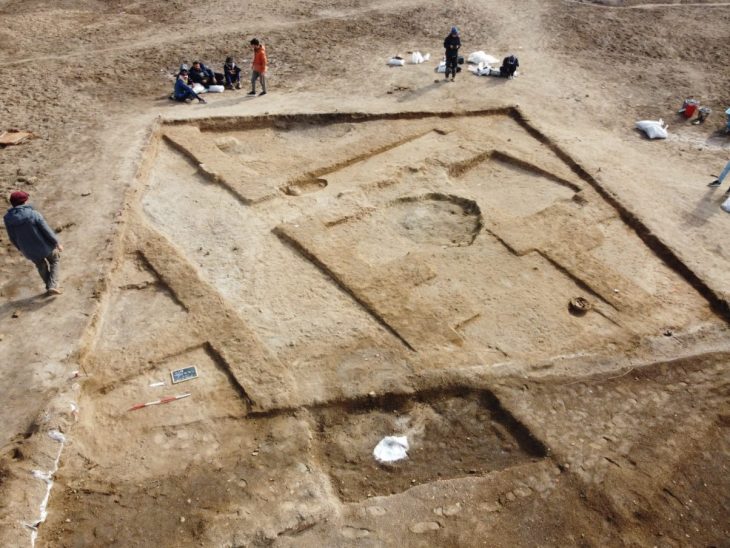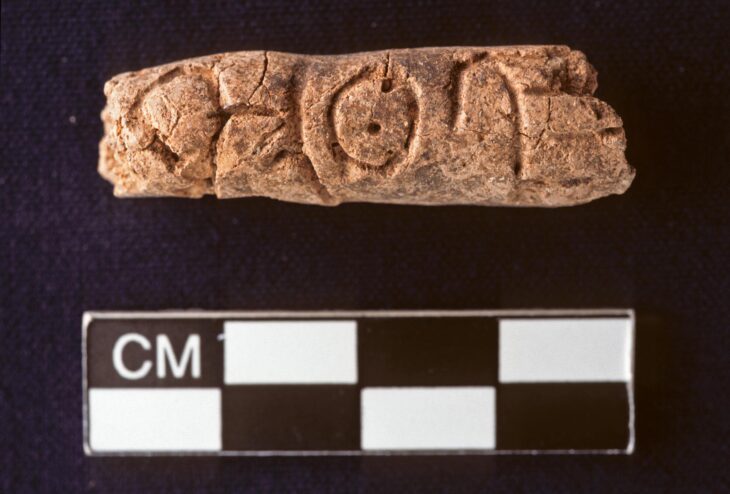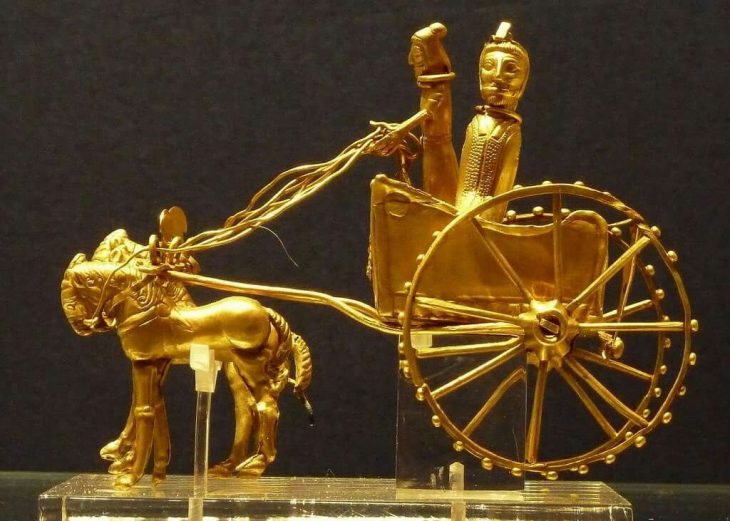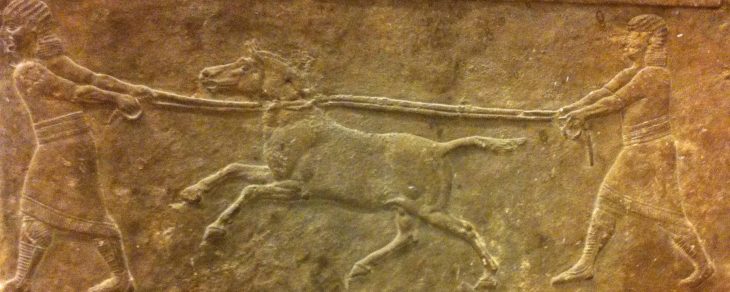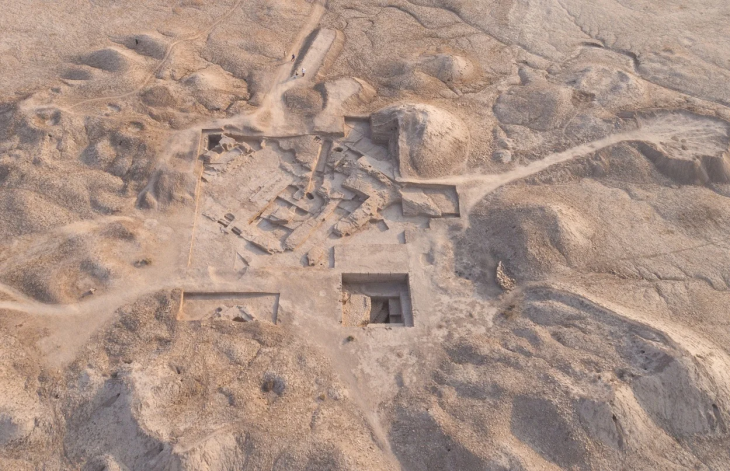The first data related to the use of vehicles by humans appeared on a clay tablet found in stage IVa of Uruk residents, South Mesopotamia, at the end of the 4th millennium BC (3200-3100 BC).
At the beginning of the third millennium BC, we can say that wheeled chariots appeared on two objects; the vehicles that took place on the battlefield of the “Standard of Ur” and “Stele of Vulture” in the early 3rd millennium BC were also used in the military Purpose.
Cars became one of the most important weapons in the war, allowing governments to succeed in terms of politics, territorial expansion, and defense. Chariots were the most significant element of the army for the Assyrians.
The oldest known depiction of an Assyrian chariot took place on a cylindrical seal from the Ninurta-Tukulti-Ašur period (1133 BC), dating back to the Assurnasirpal I period (1050-1032 BC) and from the Tukulti-Ninurta II period (888-884 BC). The earliest systematic study of the Assyrian chariot was carried out on the relief of the palace of Assurnasirpal II. (883-859 BC).
During the reigns of Assurnasirpal II (883-859 BC) and Assurbanipal (668-631 BC), the chariot has developed into a form more suitable for meeting needs.
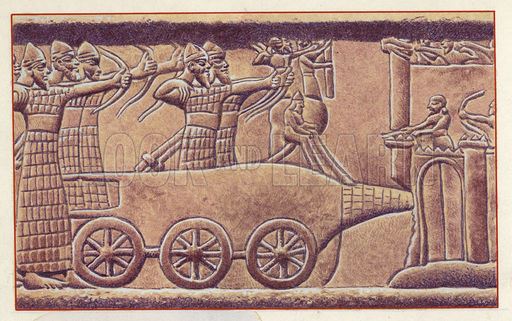
The design and development of the chariot depended were dictated by tactical requirements and field conditions. Two soldiers were pulled by two or three horses in chariots, but as chariots advanced, four horses and four warriors were drawn. It has become fast and functional.
Systematic on two-wheeled chariots studies II. Palace of Assurnasirpal (883-859 BC) made possible by examining the reliefs. Accordingly, in chariots the front of the case is rounded, and the case serves as a kind of armor.They were covered with metal panels and converted into heavy chariots. Likewise, horses are heavily armored. Thus, The safety of both military personnel and horses has been increased.
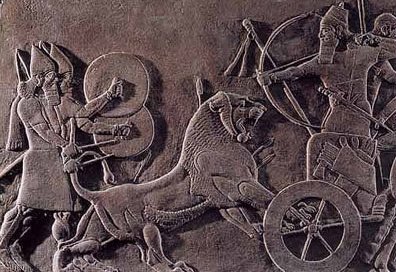
III. Tiglath-Pileser (745-727 BC) and II. Sargon (721-705 BC) there were significant changes in war chariots during the periods.
These changes are the result of wheel diameters and rims growth and an increase in the number of spokes from six to eight. Thus, the durability and robustness of the chariots increased.
From the period of Assurnasirpal II (883-859 BC), six-spokes wheeled cars were used, while III. Eight spoke wheels began to be used from the period of Tiglat-Pileser (745-727 BC) to the period of Assurbanipal (668-631 BC).
Thus, the endurance of the chariots against high speeds on the battlefield and their durability against rough terrain conditions has increased. In addition, the outer surface of the wooden circle in contact with the ground is covered with an iron protective ring.
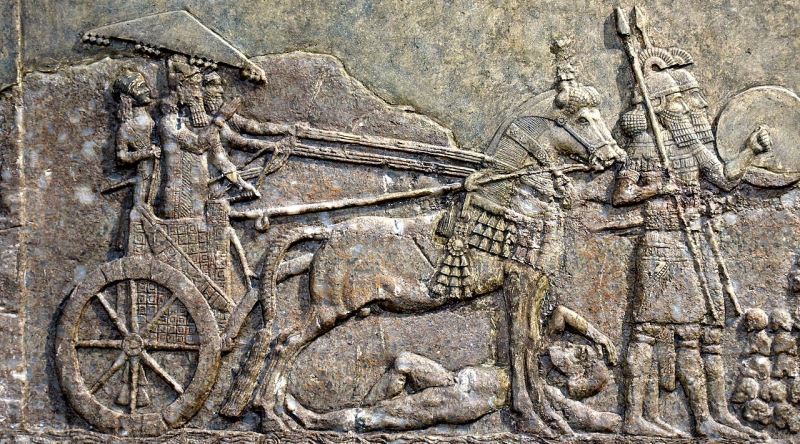
Sargon II. consisting of three people in chariots during the period, we meet the crew. The third person(Tašlīšu) has protected the driver (Mukil appāte) and archer (Māru damqu) in the chariot with his two-round shields. Another important development in this period was the use of the yoke system, where four horses could run together.
The Assyrian army was the most advanced, largest, and best organized in the ancient world.
The Assyrian army, which was initially under the influence of Mitanni, but showed great developments in time and exhibited an excellent example of organization, also became the pioneer of the imperial armies to be established later. This great army, which was always in the shadow of the god Assyria and under the command of ruthless rulers, showed itself as a force that could decisively pursue the state policy aimed at exploitation and plunder and posed a great threat to its enemies.
In this article, excerpts are taken from the article Chariots in Neo-Assyrian Army published in The Journal of Social Sciences Institute.

